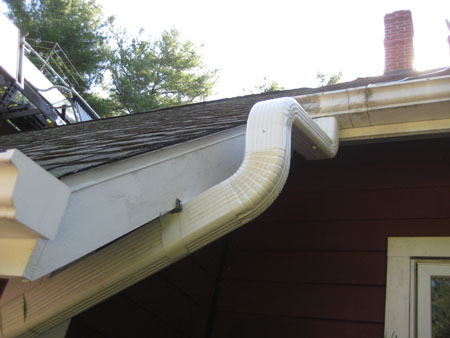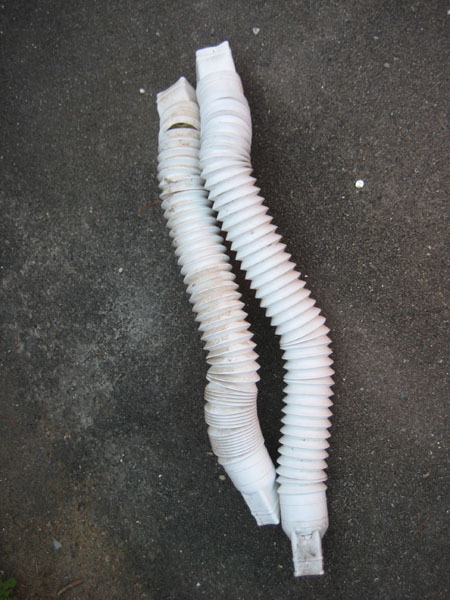|
|
|
better downspout
Thursday, July 1 2010
When we'd moved into this house back in the autumn of 2002, there were still a lot of things we didn't know about the practical business of owning and maintaining a house (notice that I'm using the term "house" here and not "home"; I'm discussing the physical structure, the commodity that real estate agents sell, their choice of words notwithstanding). We knew some basics: that a sound roof is important, that rot is bad, and that when one hangs something on a wall, it is best to locate the hanging nail in a stud. We knew less about issues of water runoff and drainage, assuming that the previous residents had done whatever was necessary to mitigate any problems with these. Only after living in our house for a couple years was it clear that drainage was a serious problem that had not been adequately addressed by those who had come before us. The first sign of trouble had been in the basement, where large splotches of black mold quickly spread across the drywall in the closet of the basement master bedroom (our main guest room). Initially I'd thought this to be the result of condensation, which is unrelated to drainage problems. But then in August of 2004 during a rain storm, I'd pried loose some of the rotting drywall to see what lay behind it. What I found was running water. That was when I knew that there was a severe basement leak. It turned out that the south end of the western basement foundation wall (which is something of a dam holding back an eight foot tall mass of soil) had been cracked and structurally compromised by the weight of the soil behind it. And why had this soil been so heavy? The roof had been dumping all of its runoff directly on it. Clearly I'd needed to do something, so over the course of several months, I excavated a trench around the south end of the house all the way down to the foundation drain, repaired and reinforced the foundation cracks from both the outside and the inside, and then installed two tiers of additional drainage pipe. Finally, I'd filled in the trench with gravel, which I covered with material to keep dirt from clogging it. This gave me systems in place to intercept water on the ground, but that wasn't enough, so I added gutters to grab the water and direct it around the south end of the house.
In the spring of 2005, I undertook a massive drainage project to intercept all remaining possible surface water on the uphill side of the house and direct it around the north end of the house. This included the addition of gutters in the middle part of the house's west roof to prevent possible foundation stress (though none was evident in the boiler room or in a large basement closet where I removed yet more suspiciously-moldy drywall). In routing the water from this set of gutters to a downspout connected to subterranean drainage, I'd found myself dealing with some complicated roof geometry. So I'd cheated and used a pair of those large articulated flexible plastic downspout units in series to get the water from the gutter to the downspout. And this had worked for years (maybe five years). But last winter it had gotten jammed-up with debris caught on the articulations and I'd ruptured one of them trying to poke the debris free. Today I finally got around to replacing this whole sorry improvisation with genuine aluminum gutter downspout pieces. In order to get from the gutter to the downspout, I'd had to use four fittings and two roughly 24 inch pieces of straight spout. The arrangement was sort of complicated, so photographs are in order.

The new down spout assemblage.

It goes all crazy there for a bit. You can see the hydronic solar panels in this shot.

The old plastic pipe I'd ripped out, complete with a visible rupture.
For linking purposes this article's URL is:
http://asecular.com/blog.php?100701 feedback
previous | next |


